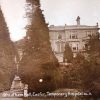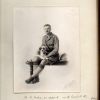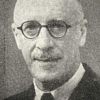
Wartime hospital past of Exeter landmark building commemorated
The First World War hospital past of one of Exeter’s landmark buildings and the contribution of doctors and nurses who worked there will be commemorated.
Reed Hall, then called Streatham Hall, housed injured soldiers between 1917 and 1919. It was one of the city’s seven temporary wartime treatment centres for troops.
Experts have uncovered incredible first-hand accounts from those accommodated in the hospitals, as well as medical staff who worked there. Now a heritage plaque will be installed on Reed Hall to mark this history.
The research has been carried out by experts from the University of Exeter’s Centre for Medical History and Exeter Local History Society. They have been able to learn more about life in wartime Reed Hall through diaries and letters written at the time. The plaque will be dedicated at a ceremony on Thursday, April 26 attended by Exeter’s Lord Mayor and relatives of those who were treated.
Reed Hall, then Exeter war hospital Number 7, was home to 100 patients at any one time from 1917. Before then the owners, the Thornton West family, had allowed it to be used for billeting soldiers. Reed Hall is now part of the University of Exeter’s Streatham campus, and used for meetings and events by the public.
Other temporary war hospitals were set up in the then West of England Eye Infirmary, now the Hotel Du Vin, Bishop Blackall School, on Pennsylvania Road, the children’s home at the Workhouse on Heavitree Road, in the barracks on Topsham Road, in Bradninch Hall on Castle Street and at the Bishop’s Palace at Exeter Cathedral. In time it is hoped commemorative plaques will be put up at all the buildings which still remain.
Dr Julia Neville, from the University of Exeter, coordinator of the Exeter War Hospitals Research project, said: “We are so lucky to have first-hand accounts of life at hospital Number 7 from doctors, nurses and patients, and are very grateful to the members of the public who have shared precious diaries and letters belonging to their ancestors with us.
“It is fantastic that the wartime history of Reed Hall will now be recorded for all to see.”
Lieutenant John Kennaway’s admission to Hospital No 7 is recorded in the memoirs of Ruth Whitaker, the daughter of a Broadclyst vicar, who had known him when they both lived in East Devon before the war. John had been serving in Mesopotamia, and like others had contracted typhoid. Ruth wrote: “Men from Devon naturally tried to get sent to Exeter, and several of my friends passed through”. John’s grandson Sir John-Michael Kennaway of Escot House, will dedicate the plaque at the ceremony.
Ruth Whitaker also describes how she had to sleep in the estate farmhouse near the hospital. She treated a patient with shell shock, accompanied by his “terrified” wife later tried to climb out of a third floor window. The man was later taken to a shell shock hospital in Plymouth, where he shortly afterwards died.
Patient Acting Lieutenant-Colonel Edward Bolitho, who was from Cornwall, wrote in November 2017 about his treatment to Georgina Buller, responsible for organising Exeter’s wartime hospitals: “When I arrived I could not use my right arm, but now, being almost completely healed, I write, being better late than never, to thank you for all the trouble you took to get me sent to this hospital.”
Another patient of the hospital was Richard Wayland-Smith, who had qualified as a doctor at Edinburgh University. He had been a member of the Officers’ Training Corps there and served as a Lieutenant in the Royal Army Medical Corps. He was on the Western Front for three years before being shot in June 1917. After treatment at Hospital No 7 he was passed fit for home service and the Army posted him as the Resident Medical Officer to the Exeter war hospital No 5. In the 1920s Richard Wayland-Smith came back to Exeter first as house surgeon and later as consultant. He was elected as Sheriff of Exeter in 1927 and as Mayor of Exeter in 1952.



















